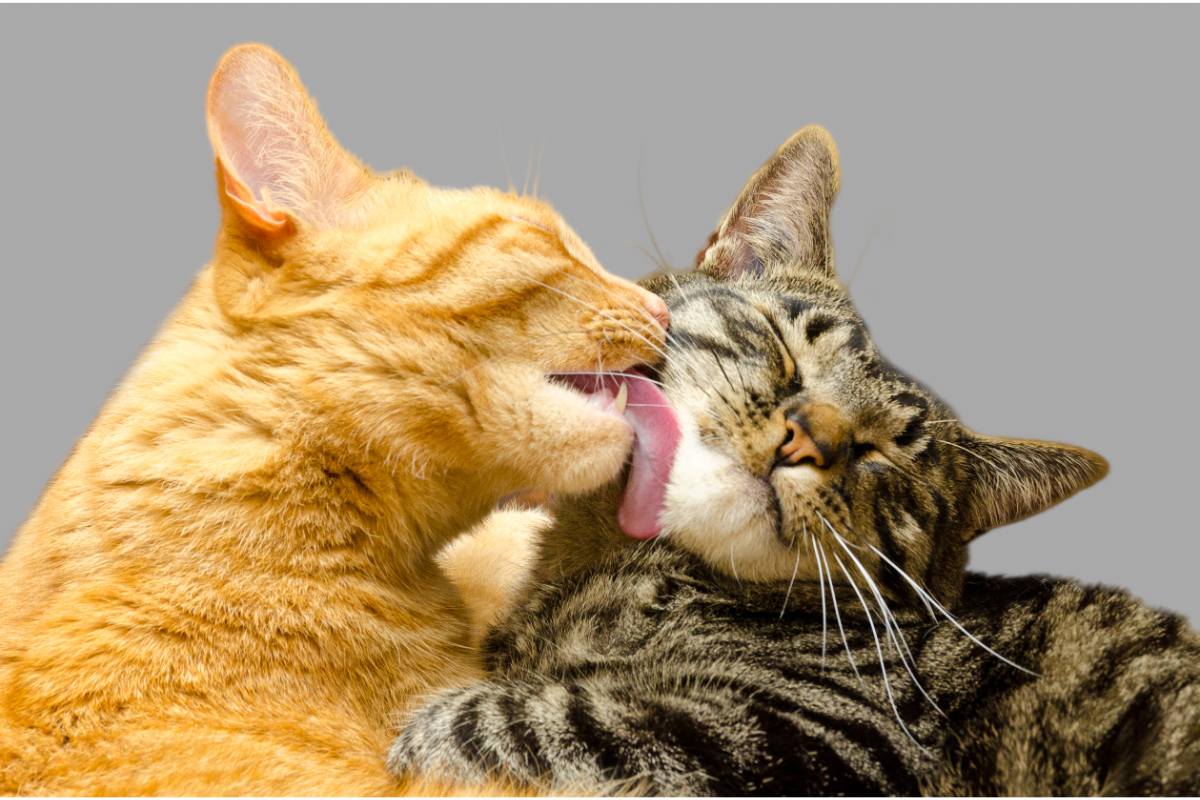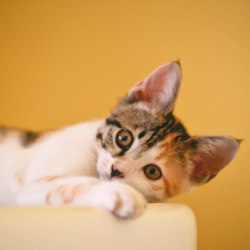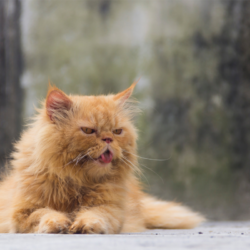Feline leukemia, caused by the feline leukemogenic virus (FeLV), is a serious disease that affects domestic cats and other felines. This virus can cause a range of conditions from chronic infections to fatal cancers. In this article, we explore in detail the infectious agent responsible, the symptoms in animals, diagnostic methods, available treatments and preventive measures.
What is the infectious agent responsible?
Feline leukemia is caused by the feline leukemogenic virus(FeLV), a retrovirus belonging to the Gammaretrovirus genus and the Retroviridae family. Unlike DNA viruses, FeLV contains RNA, using an enzyme called reverse transcriptase to integrate its genetic material into host cells.
FeLV is mainly transmitted via saliva during social interactions between cats, such as mutual grooming, sharing bowls or fighting. The virus can also be spread via faeces, mother’s milk, urine and nasal secretions. Felines can contract FeLV at any stage in their lives, although young kittens are particularly vulnerable.
There are several subtypes of FeLV, each with specific cell receptors. FeLV-A is the most common and is transmitted only horizontally. The virus does not affect humans but can reproduce in human cell lines in the laboratory. FeLV can cause a number of serious diseases in cats, including immunosuppression, anaemia and cancers such as lymphosarcoma and leukaemia.
Infected cats can develop different immune responses, including virus neutralisation, latency or persistent viremia. The prevalence of FeLV varies from region to region, but the introduction of screening and vaccination strategies has significantly reduced the number of cases in Europe.
What are the symptoms of feline leukemia?
The symptoms of feline leukemia are varied and often non-specific, making diagnosis difficult. The most common clinical signs include a reduction in appetite that can even lead to anorexia, weight loss, apathy, lethargy and fever. Infected cats may also present with diarrhoea, breathing difficulties, repeated conjunctivitis, and oral cavity disorders such as gingivitis or stomatitis.
Lymph nodes may enlarge and hard-to-heal abscesses may develop. Symptoms depend on the organ affected by the virus and the presence of any secondary diseases. Some FeLV-positive cats remain asymptomatic for years, but are still contagious to other cats.
Young kittens are particularly susceptible to FeLV infection. Late infections generally have a better prognosis. The life expectancy of an infected cat is generally 2 to 3 years after diagnosis. Persistent infections lead to a variety of symptoms, ranging from immunosuppression, which predisposes to secondary infections, to severe anaemia and neoplastic syndromes such as lymphoma.
Clinical signs of feline leukemia include respiratory disorders, oral diseases, immunosuppression, anaemia and various tumours. Tumours include lymphosarcomas, which may be thymic, mediastinal, digestive, multicentric or atypical. Neurological, cutaneous and ocular symptoms are also possible, making the disease complex and multifaceted.
How is it diagnosed?
Diagnosis of feline leukemia is based mainly on antigenic tests and PCR analyses carried out by a veterinarian. Antigen tests detect the p27 capsid protein in serum, plasma or whole blood, indicating the presence of the virus. These tests are reliable but can produce false positives, especially in the absence of clinical symptoms. To confirm a positive result, vets use a PCR test to detect proviral DNA integrated into the cat’s genome.
Vets often carry out the antigen tests on site, offering rapid results. When a cat tests positive, the test should be repeated after 6-8 weeks to check whether the infection persists or is transient. Antigen tests can differentiate between progressive and early regressive infection. If the tests are persistently positive, the infection is progressive.
If the results of antigenic tests are inconsistent, PCR analysis is essential to detect proviral DNA. PCR tests can also detect viral RNA, indicating active viremia. These tests enable early detection of infection, sometimes as early as 7 days after infection.
Antibodies to FeLV can also be detected, indicating previous exposure to the virus and the development of immunity. Test results may vary according to the stage of infection and the animal’s immune response.
What treatments are available?
There is currently no curative treatment for feline leukemia. Therapeutic interventions focus on treating associated pathologies and secondary infections. Asymptomatic cats must be monitored regularly to detect the appearance of any pathology at an early stage.
When symptoms do appear, it is crucial to identify and treat the underlying pathology. FeLV predisposes cats to superinfections due to the immunosuppression it causes. Treatments for these infections follow similar protocols to those for uninfected cats. However, they sometimes require more aggressive and prolonged interventions.
Standard chemotherapy protocols treat FeLV-induced lymphomas, although the remission period and life expectancy of cats is often shorter than for other types of lymphoma. In cases of severe anaemia, blood transfusions or weekly injections of darbepoetin, an erythrocyte growth factor, may be necessary. Glucocorticoids may be used if there is an immune mechanism causing the anaemia.
A promising treatment for FeLV-infected cats is the use of Acemannan. This is a water-soluble complex carbohydrate extracted from Aloe Vera.Acemannan is known for its immunostimulant, antiviral and anti-tumour properties. It stimulates the immune response by increasing levels of TNF-α (Tumoral Necrosis Factor Alpha),IL-1 (Interleukin 1) and PGE2 (Prostaglandin E2). It thus helps the body to fight infections and tumours. Studies have shown that acemannan can improve lymphocyte count and reduce the incidence of infections. Cats treated with this molecule appear to be better able to control and eliminate infections.
What are the means of prevention?
Prevention of feline leukemia is mainly based on screening and vaccination. Screening affected cats is essential to prevent the virus spreading. FeLV-positive cats must be isolated from other cats to prevent transmission.
Vaccination is recommended for cats at risk, such as those with access to the outdoors or living with FeLV-positive individuals. Several vaccines are available, offering protection against FeLV. The primary vaccination consists of two doses 3 to 4 weeks apart, followed by a booster a year later and then every 2 to 3 years.
The vaccine does not prevent infection, but it does reduce the likelihood of developing progressive forms of the disease and associated pathologies. Vaccinated cats can still contract the virus, but the symptoms are often less severe.
In cat communities, strict isolation measures are necessary. Shelters test cats on arrival and place them in quarantine before introducing them to other cats.Positive cats remain in isolation.
Owners of positive cats must take precautions to prevent the virus spreading. For example, they should keep their cats indoors and avoid feeding them raw meat to limit the risk of superinfection. Immunosuppressed cats require more frequent vaccinations to maintain adequate protection against other infections.





